Bushcraft is so much fun – minimal gear, a great connection to nature, and an opportunity to emulate those guys on YouTube who build full log cabins with working toilets out of nothing but twigs and twine.
Plus, if you're ever somewhere wild, you want to know that you can cope when things don’t go to plan. This is what makes bushcraft essential: a mix of practical know-how, simple tricks, and confidence to turn what you’ve got around you into exactly what you need.
Outdoor writer and Mountain Leader Sarah Ryan has pulled together her best advice on making sure you've got shelter, fire, food and more, so you can level up your skills and sharpen your instincts. These are tips worth learning by heart – because when you're wild camping, knowledge weighs nothing. Also there's no WiFi.
Short of building your own survival kit, bushcraft is the best way to stay safe in the wild. With these top tips under your belt, you’ll never be caught out in the wild with your pants down. Unless, of course, you’re doing that on purpose.
How to pitch a tarp
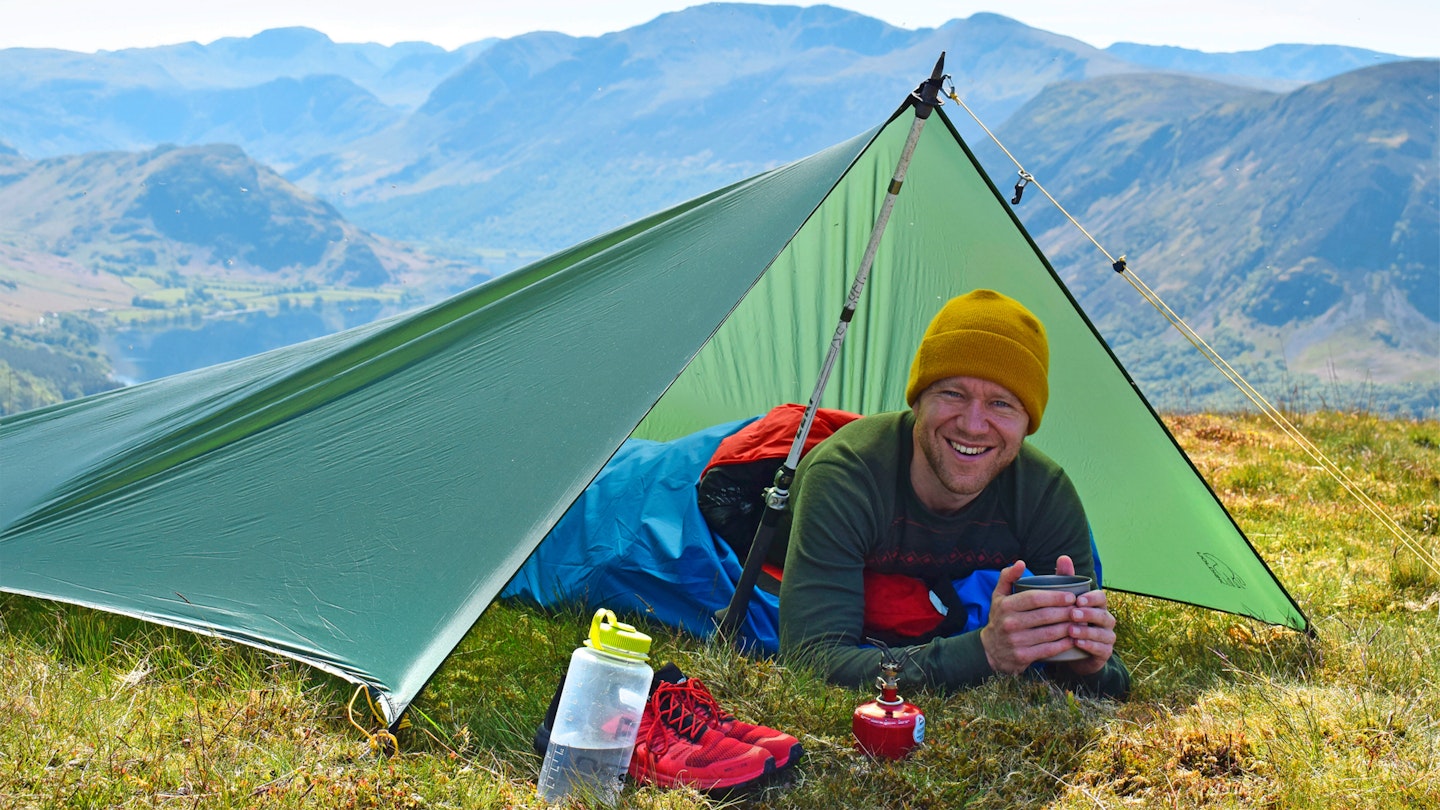
With the right engineering, you can get away with camping under literally any large piece of tarpaulin. However, the best camping tarps are purpose-build, lightweight, and tend to cost a bit less than wild camping tents.
You can pitch one quickly and effectively in a variety of ways, depending on the conditions and what you need most – from a windbreak to a one-man tent. Here’s how to make a tarp work for you.
Between trees
Find two trees with a flat area of ground between them. Tie one end of the cord around a tree with a quick-release knot. Suspend the tarp over the cord using the loops and secure it with knots or clips. Pull the cord taut and wrap it around the second tree several times to tension it, then knot it. Finally, stake the four corners or guy lines to the ground.
As a one-man tent
Lie the tarp flat on the ground and stake the middle loop – this will form the back. Stand a walking pole upside down at the front with the middle loop of the tarp around the spike. Tension the pole against the tarp with a guy line at 90° to hold it in place. Stake the four corners.
As a windbreak
Stake one side of the tarp to the ground at three points: the two corners and one in the middle. Tie each of the two loose corners to a tree or extended walking pole. If using poles, tension them with paracord.
How to build a fire
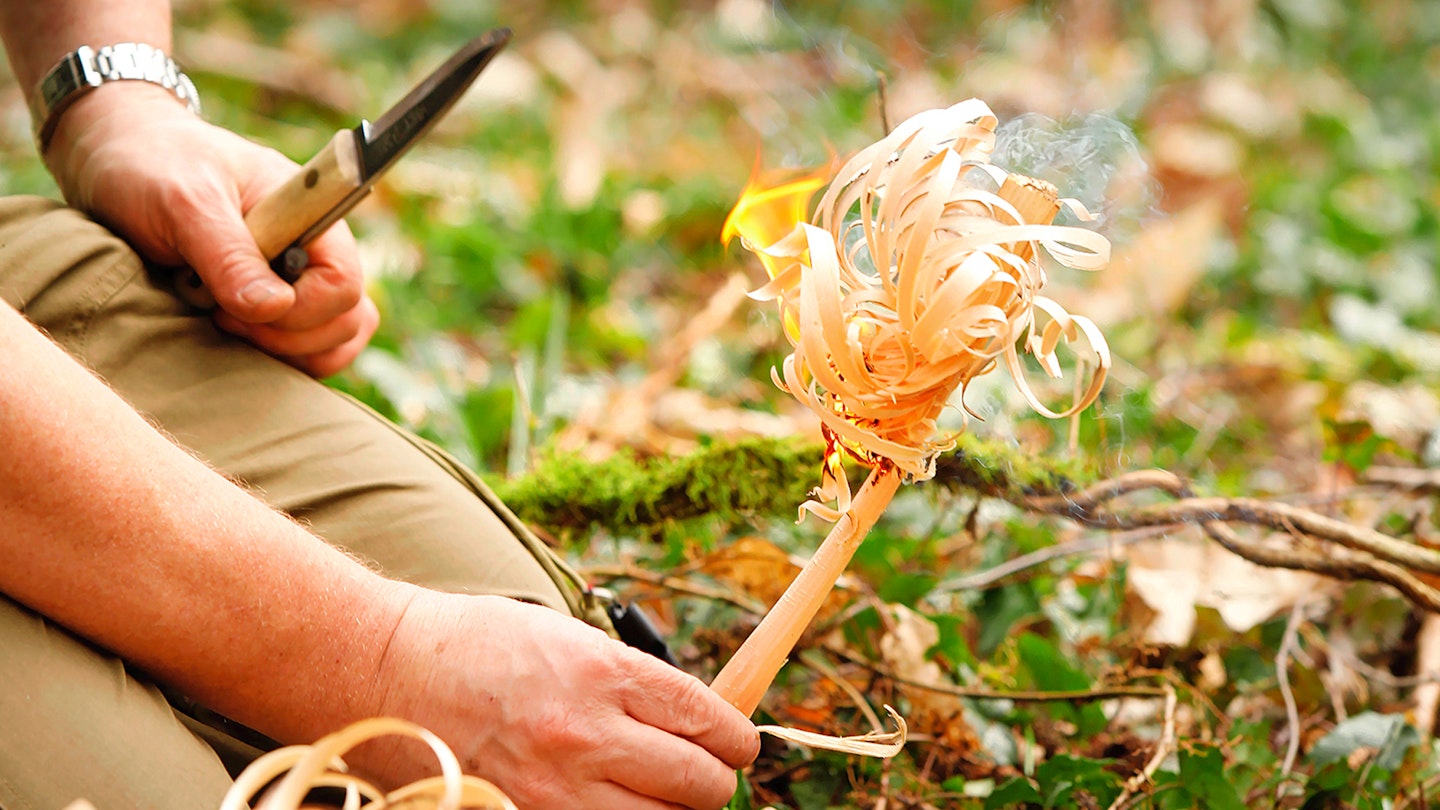
Find the best natural tinder
When it comes to starting a fire, the right tinder makes all the difference. Dry grass goes up quickly but burns out fast, so you’ll need something to follow it with.
Pine needles, whether brown or dried, catch easily and give off a fantastic – if smoky – scent, and cones are great too. Dead bracken works well when it’s dry and brown, though you should avoid anything rotten.
Birch bark is another excellent option, but only ever take strips that are already naturally peeling away; never cut into the inner bark, which protects the tree. Finally, even ordinary dry twigs can be made into effective tinder if you flake them into tiny pieces with a knife – they’ll catch quickly and easily.
Basic fire-making mistakes
There are a few common errors to avoid. For one, using green wood cut fresh from trees will only give you smoke without fire, and it harms the tree in the process.
Another mistake is trying to light a log from scratch – always begin with tinder, then move on to small twigs for kindling, before adding larger fuel wood.
Not enough heat is another killer: don’t let the heart of the fire cool, and keep it steadily fed. Equally, a lack of oxygen will snuff it out, so blow with long, controlled puffs to reignite embers, and clear away ash if it’s starting to bank up.
And finally, resist the urge to poke at it constantly – once a fire is blazing, leave it be, because many a good fire has been poked to death.
Campfire cooking
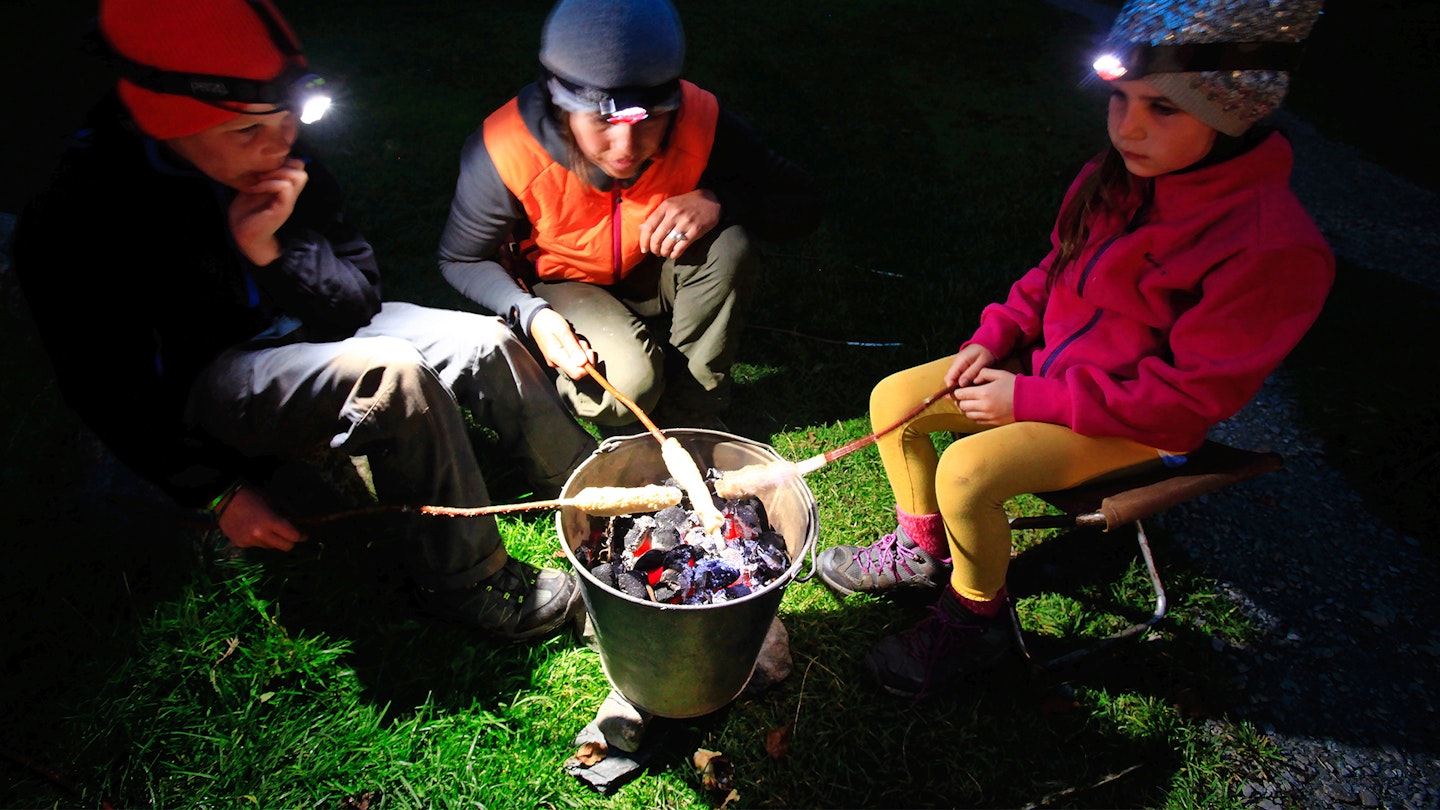
Make fab firebread
-
Find a stick about the thickness of your thumb and strip the bark from the tip.
-
Pour 300ml of water into a ziplock bag with 500g flour and a pinch of salt.
-
Seal the bag and mush it about until mixed.
-
Using the bag as a surface, knead the dough and roll it into a sausage.
-
Wind the dough around the stick.
-
Hold it over the embers, turning until golden-brown.
Three great campfire snacks:
-
Potatoes in foil shoved in the embers.
-
Bacon wrapped around a stick.
-
Bananas in their skin, cut open and stuffed with squares of chocolate.
You won't believe your luck, but we've actually written up a full guide to the best camping snacks, if these aren't quite enough for you.
Wood whittling
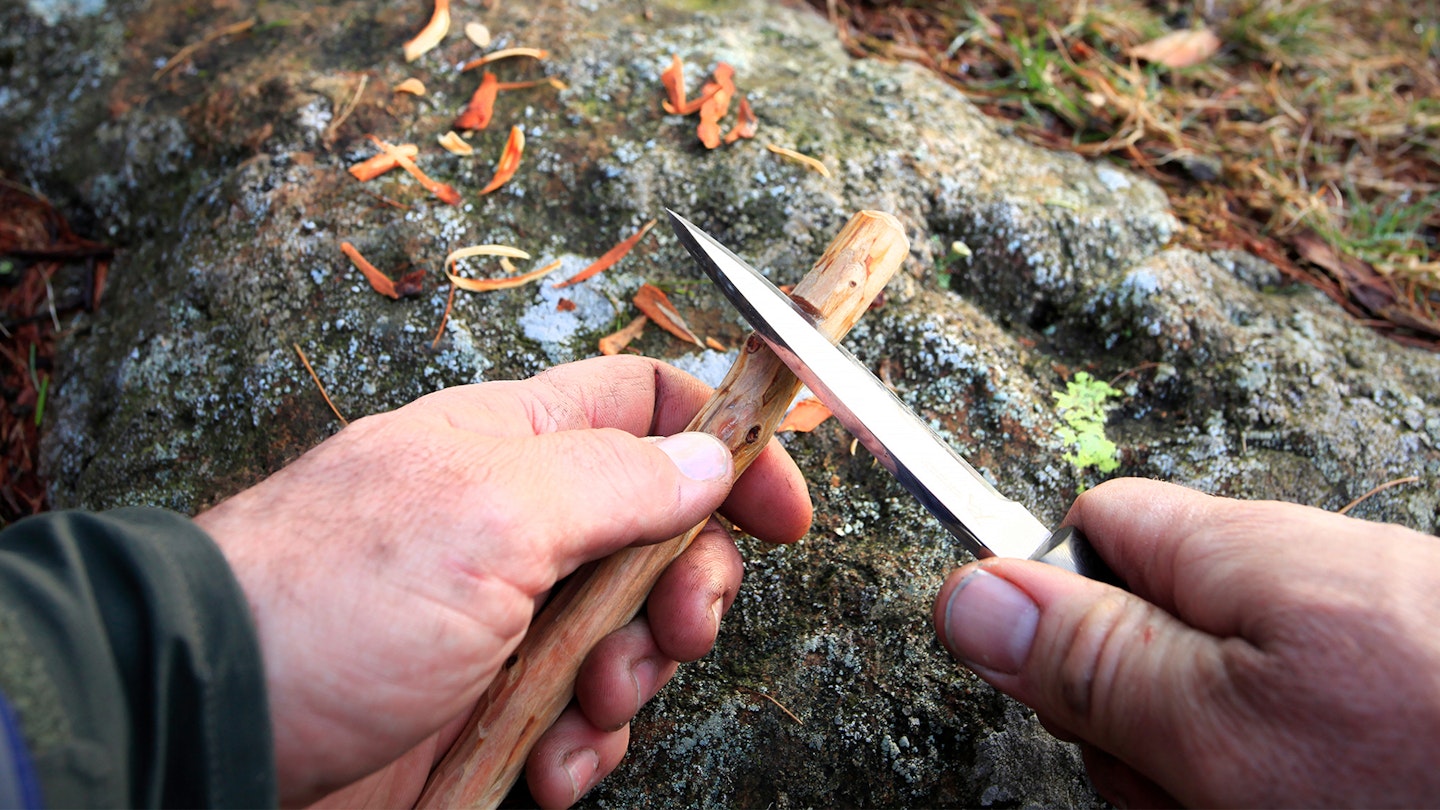
Meditative, creative and practical, whittling is one of the most soothing ways to spend an evening. To start, always sharpen your knife – a blunt blade is far more likely to slip and cause injury – and keep it sheathed when not in use. Never stick it into wood or the ground, as this will dull the edge and create hazards for others.
Once your tool is ready, pick your wood. Pine is soft and easy to shape, but random twigs will do the job too. Don’t rush: make slow, deliberate cuts and remember the maxim, think twice, cut once.
Always cut away from yourself, being mindful of where the blade will stop, and work to the side of your legs rather than between them to lessen the risk of injury.
Pay attention to the grain of the wood, as cutting with it will give smoother, longer strokes, while cutting against it will feel brittle and resistant.
Finally, when making power cuts, such as pointing the end of a stick, pull the wood towards you instead of pushing the knife away – it’s more efficient and gives you better control.
Night navigation

When the sun goes down, navigating safely in the hills becomes a different skill altogether. Even with a good head torch, it’s easy to lose depth perception or miss important details in the dark, so learning to use your eyes effectively is just as crucial as carrying the right kit.
Increase your field of vision
A wide field of vision helps you pick up details at night or on tricky descents. Train it with this simple drill:
Hold your arms straight out in front, palms together, thumbs up. Slowly open your arms without moving your head or eyes, keeping track of your hands. Open as wide as you can while keeping them in view, then stop. Repeat.
Preserve your eyes
It takes about 45 minutes to fully develop night vision – about the same as a sunset. A single flash of light can ruin it. Preserve one eye by keeping it closed when exposed to light, so you retain night vision in the other.
About the author
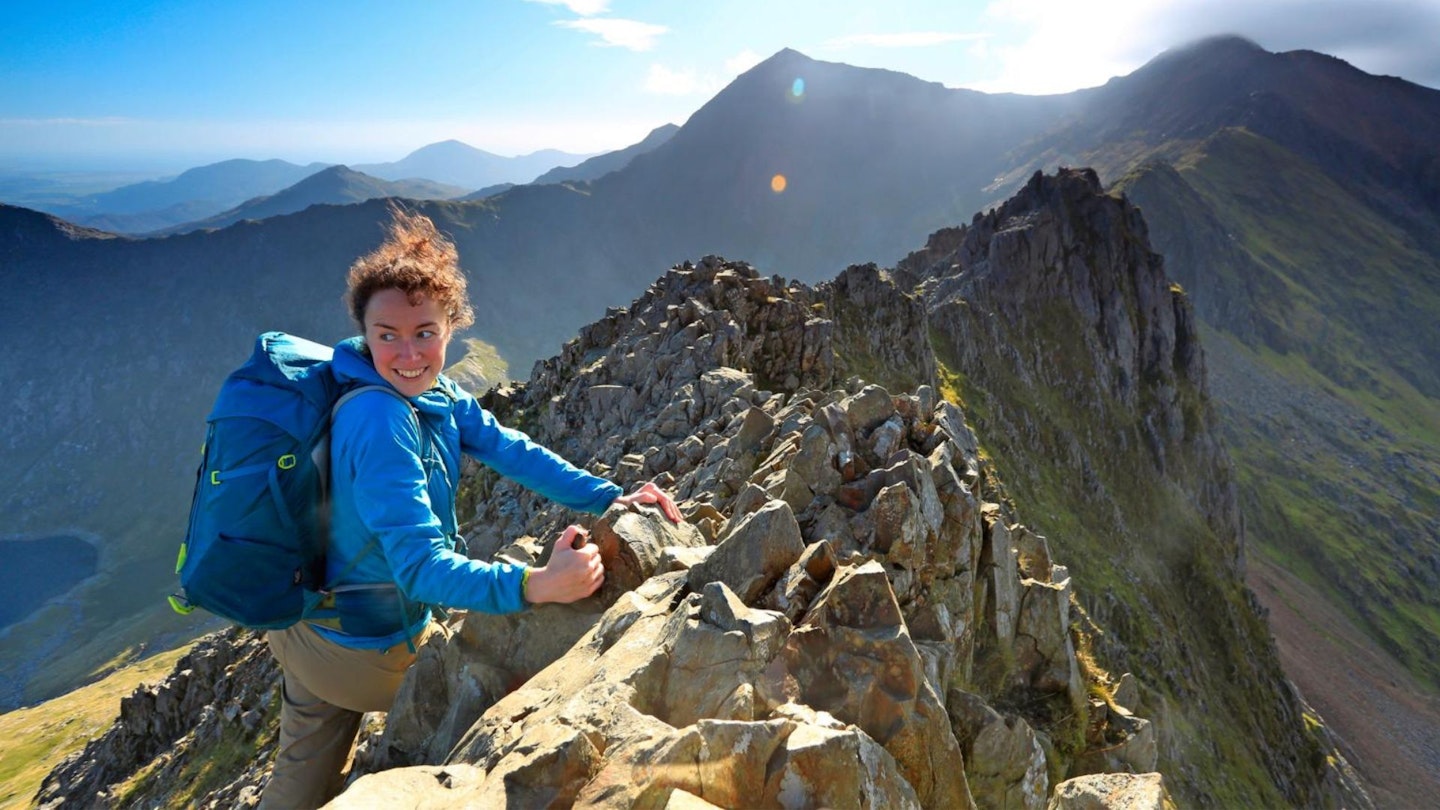
Sarah Ryan worked for both Trail and Trail Running magazines during her rich and varied career as a writer, nature educator, wild camping guide and mountain leader.
She lives and works just a stone's throw from the Peak District National Park, where she walks, runs, cycles and camps regularly in both her spare and professional time.
